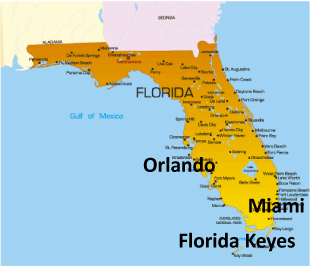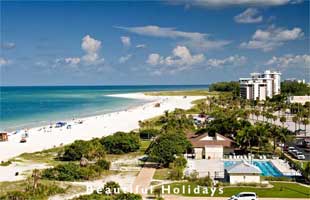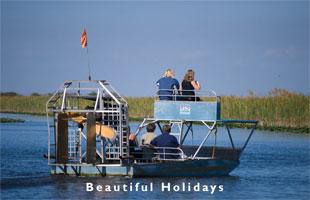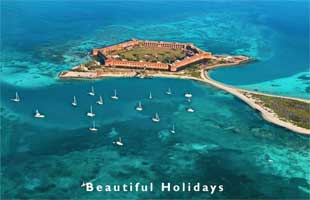Florida Keys Holidays & Accommodation
USA, North America

The Florida Keys and Everglades represent some uniquely beautiful natural scenery. The Florida Keys are a coral archipelago at the southeast tip of the Florida peninsula. They curve in a south-southwest arc into Florida Bay, and, as a coral archipelago, there are some great diving opportunities just offshore at the nearby coral reef just offshore. The Everglades are a vast area of subtropical wetlands that stretch as far north as Fort Lauderdale, they are the southern half of a large watershed and represent a bounteous ecosystem full of varied wildlife that can be viewed by visitors.
Florida Keys Holidays Planner
The tip of the Florida Keys ends at the last inhabited island of Key West, only 90 miles from Cuba. The climate is classified as tropical. Some islands you may want to visit include Key Largo, Islamorada, and Big Pine Key. Being on the ocean, there are plenty of ocean sports you can pursue on these islands, including parasailing, jet skiing, and fishing.
Key Largo is at the top of the island chain. Here you can charter a glass bottom boat cruise, canoe, or kayak to spot tropical fish in and around the coral reef. It is here that the fresh water of the Everglades meets the saltwater of Florida Bay, and at different areas you can spot crocodiles, bottlenose dolphins, sea turtles, and manatees. Certain eco-tour operators give you the opportunity to interact with wild dolphins in a natural setting as well. If you are scuba-certified, you will certainly want to take the opportunity to dive around the area, and you may want to explore Spiegel Grove, where a Navy ship was sunk to create an artificial reef.
At Islamorada Island, known as an eco-tourist's playground you can explore diverse environments. On the one hand, you have the marine environment of coral, tropical fish, and bottlenose dolphin pods, while on the northwest you can explore a completely different marine environment full of manatees, crocodiles, and roseate spoonbills. Maybe you will want to simply kayak through the unspoilt sea-grass beds and shallow tidal flats on your own. At Key West, you can visit the architecturally distinct Old Town, see Nancy Forrester's Secret Garden, Our Lady of Lourdes Shrine, take a ghost tour, or indulge in parasailing, jet-skiing, and deep-sea fishing.
The Everglades are a diverse ecosystem; the large, shallow Lake Okeechobee drains into a slow moving river 60 miles wide and 100 miles long that forms the heart of the Everglades, an ecosystem characterized by the extremes of flood and drought. What people are most familiar with when they think of the Everglades are the sawgrass marshes that thrive in the slow moving water of this river, but as the water drains into the Atlantic, you find the most extensive mangrove forest in the world, and a network of 10 000 islands, made up mostly of mangroves.
The wildlife here is widely varied. Alligators thrive in the sloughs and sawgrass prairies by cultivating and clearing their own ponds among the thickets, while crocodiles roam the mangroves. Birds such as egrets, white and glossy ibises and 27 varieties of snake all call this environment home. Endangered species like the Florida panther and the manatee can also be found here
Visitors can experience this wildlife up close. One of the more popular ways to explore the Everglades is by airboat, a big fan propels you as you glide over the water on a light aluminum boat. It is great for viewing the wildlife with minimal disruption to the wetland environment. You can also arrange boat tours that allow you to view and even interact with manatees on the waterways with different operators.



